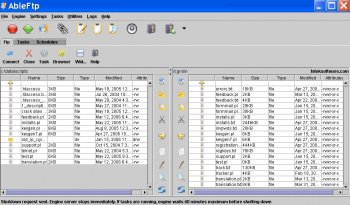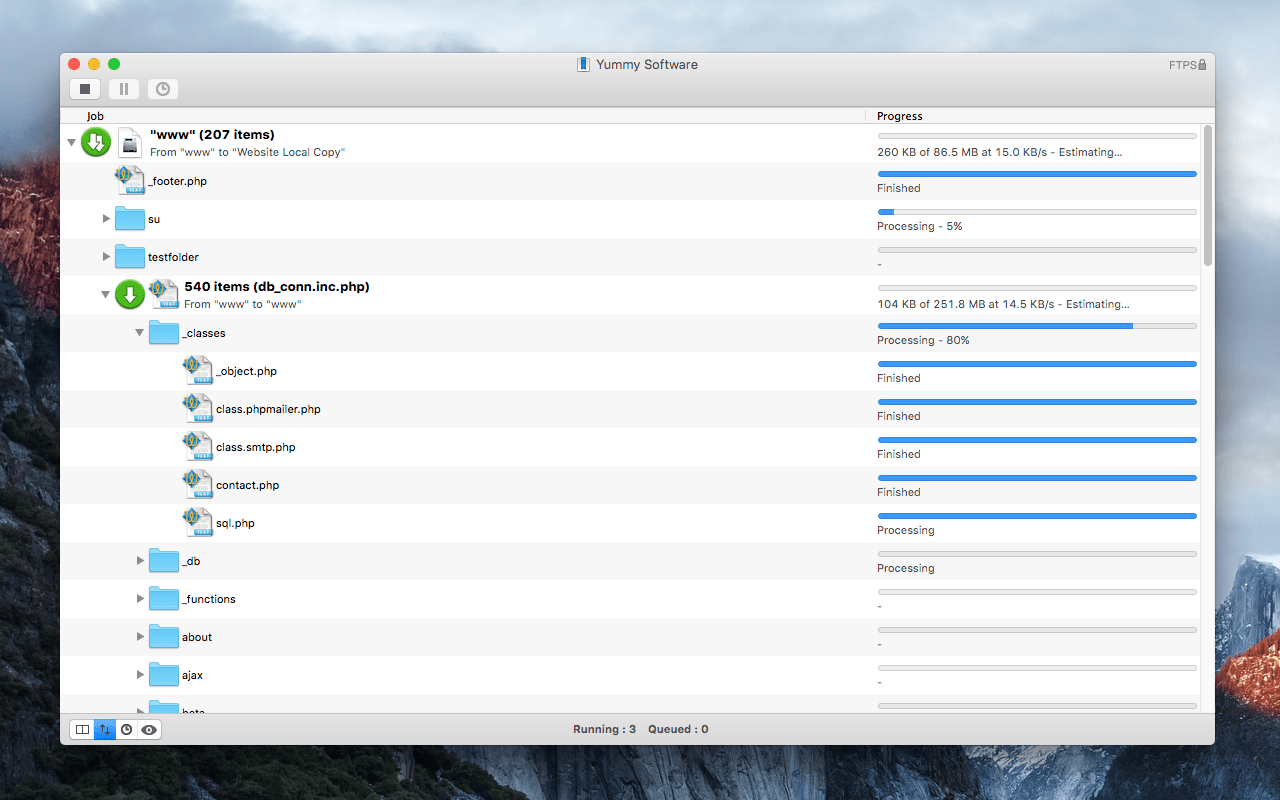
- Mac terminal ftp view ls of local directory mac os#
- Mac terminal ftp view ls of local directory password#
- Mac terminal ftp view ls of local directory download#
- Mac terminal ftp view ls of local directory mac#
Done - you can now edit locally and after each save it will upload to your remote file.įor detailed usage. Mac terminal ftp view ls of local directory download#
This will download the directory shown in the remotePath setting in sftp.json to your local open directory. A good one to start with if you want to start with a remote folder is SFTP: Download Project.Type "sftp" and you'll now see a number of other comands.The command opens a shell window to the local computer. A more convenient method of accessing the local filesystem is to use the command. Note that the actual command may depend upon your OS, for example ls may be necessary on other versions of Unix/Linux. Tested this using both the Windows and Fedora default ftp clients.

It is, however, easy to lose track of where you are in the local filesystem. The tells the client to run a local shell command.
Mac terminal ftp view ls of local directory mac#
Ctrl+Shift+P on Windows/Linux or Cmd+Shift+P on Mac open command palette. To change the directory on the local computer, you can use the lcd command at the ftp> prompt. Note that you must escape any backslashes and other special characters with a backslash. 
Mac terminal ftp view ls of local directory password#
The password parameter is optional but if you don't add it, you will be constantly prompted for a password. "remotePath": "/public_html/project ", <- This is the path which will be downloaded if you "Download Project" "password": "password ",
A basic configuration file will appear named sftp.json under the. Opening Terminal on Mac through the Spotlight search bar Hold down the Ctrl + Spacebar key combination at the same time. Click on it and search for the application 'Terminal.app' in it. Ctrl+Shift+P on Windows/Linux or Cmd+Shift+P on Mac open command palette, run SFTP: config command. In the left menu, select 'Applications' and in the list of all programs that open, find the directory/folder 'Utilities'. In VS Code, open a local directory you wish to sync to the remote server (or create an empty directory that you wish to first download the contents of a remote server folder in order to edit locally). If your latest files are on the server, you can start with an empty local folder, then download your project, and from that point sync. Very simple, requires just three lines of config! Very fast, finished in a blink. This allows you to edit more or less directly on the server similar to WinScp or other similar programs. I am trying to access some files in a directory I have under applications, sudo ls applications/Adobe Flash Builder 4. By default, ftp will try to use passive mode ftp and fall back to active. Type the address of the FTP server, like. From your Mac press, Command-K to launch the Connect to Server window, or you can do this by navigating to your device’s Go menu. Advanced Options -A Force active mode ftp. Below are some instructions that you need to follow to start an FTP connection from Mac to a remote server FTP Mac Terminal. netrc file, Command Line Editing, Command Line Prompt and Environment. This page lists Advanced Options, Cancelling FTP, File Naming Conventions. Allows you to optionally edit upload a file to the remote directory after it saves locally. For basic ftp syntax see the main ftp page. FTP might allow for anonymous log-ins, but it’s better to authenticate using a username and password.Syncs your local directory with a remote server directory. This directory is usually Users/. Mac terminal ftp view ls of local directory mac os#
You will need a FTP/SFTP username and password to log into the server. Mac OS X: Within Terminal, run pwd (print working directory). Logging into the remote server is pretty straightforward. But keep in mind that FTP is generally not considered secure, so be careful. If you don’t have SSH access, you can contact your hosting provider, or you can use FTP. Note: To use SFTP, you will need to have SSH access enabled on your server. using the macOS’ Terminal, instead of a third party FTP client. I will be telling you how you can accomplish basic FTP/SFTP tasks such as uploading/downloading files, renaming, moving, deleting etc. For the purpose of illustration, I’m using a test server with Linux, Apache, MySQL and PHP installed on it, with SSH access enabled. In this article I will be detailing how you can use the Terminal (Mac) as an FTP or SFTP client, to do a variety of tasks on remote servers.






 0 kommentar(er)
0 kommentar(er)
